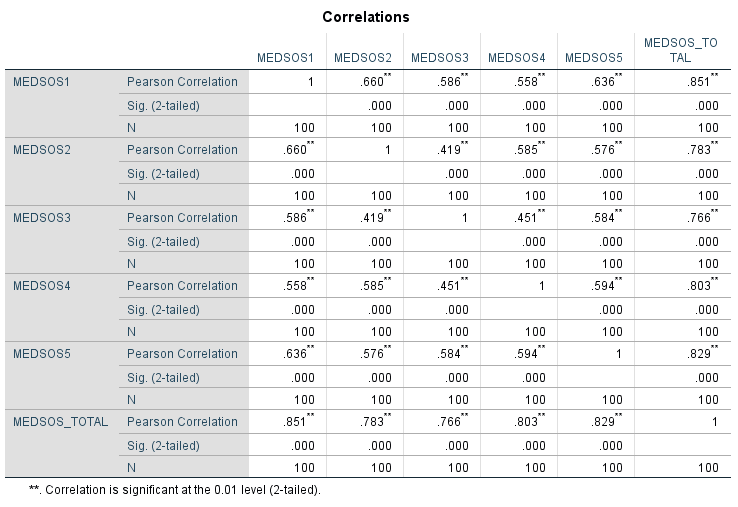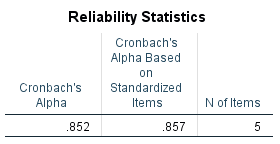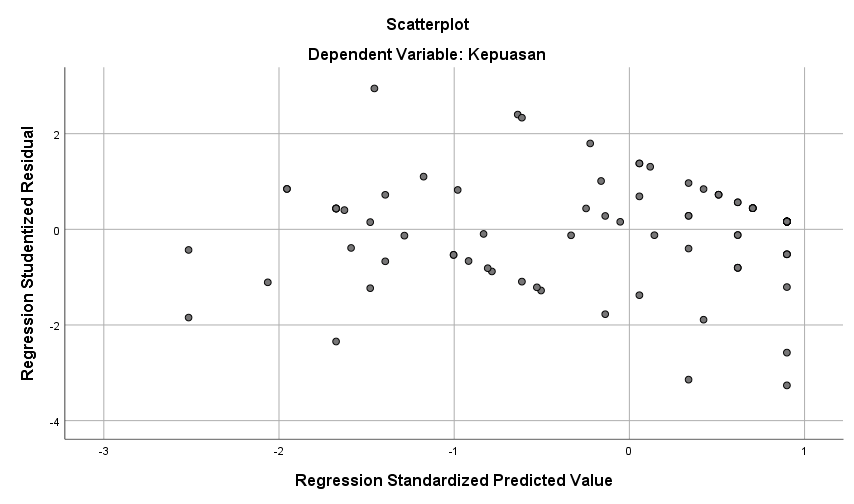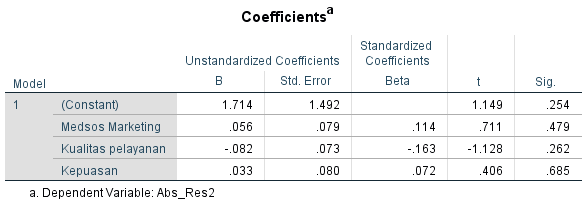In today's modern business world, intense competition often leads to the dominance of large market shares. A commercial view that is solely oriented towards maximum profit with minimal capital is often irrelevant for business continuity in this era. The MSME sector, especially in the culinary sector, is a significant contributor to Indonesia's creative economy GDP, with a contribution of 41% or around 410 trillion rupiah (quoted on January 16, 2023). The stability of the culinary industry in Indonesia in recent years shows the great potential of this sector, but challenges and fierce competition remain obstacles that must be faced by business actors.
In facing these challenges, innovation through the use of social media as a promotional medium is an important key. The use of social media is expected to help MSMEs develop, improve service quality, and attract consumer loyalty which has a positive impact on business continuity.
In the Islamic view, business activities are not only aimed at making a profit, but also accompanied by the intention of worship. The principles of muamalah in Islam, including positive and negative activity in its processes and objects, govern the halal and haram of a trade. In the context of marketing, the implementation of Islamic sharia includes promotion through social media and service quality. Allah SWT said in QS. An-Nisa 4: Verse 29:
ٰٓاَيُّهَا الَّذِيْنَ اٰمَنُوْا لَا تَأْكُلُوْٓا اَمْوَالَكُمْ بَيْنَكُمْ بِالْبَاطِلِ اِلَّآ اَنْ تَكُوْنَ تِجَارَةً عَنْ تَرَاضٍ مِّنْكُمْ ۗ وَلَا تَقْتُلُوْٓا اَنْفُسَكُمْ ۗ اِنَّ اللّٰهَ كَانَ بِكُمْ رَحِيْمًا
Meaning: O believers, do not eat the property of your neighbor in an unrighteous way, except in the form of consensual commerce among you. Thou shalt not kill yourselves. Indeed, Allah is merciful to you (1)
Which is based on the essence of the verse above, it can be implemented in the use of social media as a marketing medium must be in the corridor of Islamic teachings so as not to cause mudharat, and buying and selling transactions must be consensual in terms of service and promotion carried out by sellers to buyers. This is a guideline for business actors to be careful when utilizing social media as a marketing medium for their products. It often happens in the field of business actors who use social media as a marketing medium without paying attention to the suitability of the original product with the visuals promoted through social media. Business actors must present photos or videos that match the original product when promoting products on social media, so that customer expectations are in accordance with what they expect when buying the product and do not feel deceived or disadvantaged.
Social media can be interpreted as an online platform to make it easier for us to communicate with others (2). In today's modern era, information spreads very quickly in just minutes, we can access many things on the internet, including social media. Social media can be used for marketing media for business actors in the form of visual images, text and video to reach a wider target market or consumers This allows reaching a wider target market, increasing competitiveness and business continuity.
The quality of service is usually very influential on consumer satisfaction which will influence consumers to be interested in visiting again to buy a product. As a form of first assessment when the quality of service felt by consumers is felt as expected, the quality of service can be said to be good and satisfactory. Therefore, the presentation of products or services must be in accordance with company standards to present the best in order to form customer loyalty that causes repurchase decision behavior, recommend products to the closest people, and commit not to switch to other products. This will have an impact on the survival of a business and make customers not switch to other products or brands.
Crepes snacks are snacks originating from France, whose main raw materials are made of flour, milk and other additives, which are cooked with a circular tool with a crunchy texture and given various flavors on top and can be folded. Crepes are loved by various groups, from children, teenagers, and adults. With a price range that includes friendly pockets in all circles, so as to attract customers. One of the MSMEs "Crepes Kite" located in Kapur Village, Kubu raya, since 2022 which once had eight branches but now only has one outlet left. The main challenges faced are marketing, quality of service, and quality of food served. Increased competition demands effective marketing strategies, including promotion through social media and improved service quality to attract and retain consumers.
The purpose of this study is to examine the influence of social media, marketing, and service quality on customer loyalty through consumer satisfaction as a mediating variable. Although similar studies are widely conducted, what distinguishes this study from previous studies is that it provides a more comprehensive discussion of the determinants of customer loyalty and considers two mediating variables that influence the relationship.
(1) conducted a study entitled "Analysis of the Effect of Product Quality and Social Media Marketing on Customer Loyalty with Customer Satisfaction as an Intervening Variable in Lawoek Kopi Temanggung". With consumer satisfaction as an intervening variable, this study examines how social media marketing and product quality affect customer loyalty. This research is a type of associative quantitative that examines how two or more variables relate to each other. To do this, statistical methods are used and hypotheses are tested on numerical data. The results of this study include: product quality and social media marketing significantly affect consumer satisfaction and loyalty; High-quality products directly affect consumer loyalty, while social media marketing does not affect consumer loyalty.
(2) conducted a study entitled "The Effect of Service Quality and Product Quality on Purchasing Decisions with Customer Satisfaction as an Intervention Variable (Sharia Perspective Study on Trenggalek Nirmala Food and Beverages". with the aim of evaluating the influence of service quality and product quality on purchasing decisions. The main findings of the study are as follows: The quality of services and products directly influences consumer purchasing decisions; Product quality through consumer satisfaction influences consumer purchasing decisions; And the quality of service through customer satisfaction also influences consumer purchasing decisions.
(21) conducted a study to find out how promotion and product quality affect customer loyalty through customer satisfaction as an intervening variable. This research shows that customer satisfaction has a significant and positive influence on the promotion itself, which shows that customer loyalty has a significant and positive influence on the promotion variables themselves.
(4) conducted a study entitled "The Effect of Product Quality, Price Perception, Promotion, Location, Service Quality on Customer Loyalty through Customer Satisfaction at Bebek Kaleo Restaurant, Tebet, South Jakarta during the Covid-19 Pandemic". This study analyzes the effect of product quality, price perception, promotion, location, and service quality on customer loyalty through customer satisfaction at Bebek Kaleo Restaurant, Tebet, South Jakarta. The data was collected through a survey conducted by chance in October 2020. Path Analysis Method for analyzing data. Results show that the quality of location products and services does not affect consumer loyalty, and promotions and satisfaction greatly affect consumer loyalty. All independent variables can affect consumer loyalty directly without interfering with consumer satisfaction.
(19) conducted a Study "The Effect of Service Quality and Brand Image on Customer Loyalty through Customer Satisfaction (Study "On Users of Special Express Mail Delivery Services of Pt. Pos Indonesia in the City" Semarang" conducted by Fitria Larasati1 and Sri Suryoko in 2020. The purpose of this study is to determine "direct and indirect influences between Service Quality, Brand Image, Customer Satisfaction, and Customer Loyalty. This explicit study involved a sample of 100 people who used PT. Pos Indonesia in Semarang City. This study was conducted using the Partial Least Square analysis technique. The results of the "direct influence test between service quality" and "indirect influence test between service quality" and "this research model showed positive influence results" were significant, while the results of the "direct influence test between service quality and "brand image on customer loyalty through customer satisfaction also showed positive results".
From the background above, the author took the title of the study "The Influence of Social Media Marketing and Service Quality, on Customer Loyalty through Consumer Satisfaction as an Intervening Variable (Study of Islamic Economic Perspective Studies on MSMEs Crepes Kite Kapur Village)".
Social Media Marketing
Social media is a type of media on the internet that allows its users to communicate, cooperate, share, interact, and build virtual social relationships (6) state that marketing is the process of creating value for customers and building strong relationships with them to get good value from customers in return. (7) stated that marketing is the process of building a strong relationship with customers by showing the best in order to get a good assessment from customers,
According to Adam (2015), promotion is a marketing action that involves conveying information about the company and its goods to consumers, which generates demand. The author concludes that social media can be considered as an online platform that allows us to communicate remotely and can be used by business people as a marketing medium in the form of images, text, and videos to reach a wide target market. Thus, they can attract and increase customer loyalty in today's internet age.
As for the social media indicators of maketing:
The photos and videos shared attract the attention of the target market.
Price and taste match in photos and videos shared during promotion on social media
The visuals shared affect the target market's interest in buying
Consumers can ask questions or submit suggestions and complaints
Service Quality
Kotler (2019) states that service quality is the level of service received by consumers which will be assessed by consumers whether the level of service received is as expected. Service quality is positively correlated with customer satisfaction, which leads to increased business profits (Baskara et al., 2021). Tjiptono (2014) also stated that service quality consists of efforts to meet customer needs and desires and ensure that services are delivered quickly to meet customer expectations. All the company's resources are used to improve the quality of service, and the company pays great attention to this. Based on some of the definitions above, researchers conclude that service quality is the presentation of a product or service that is pursued as well as possible so that the services provided are as expected by consumers. In practice, service quality has its own characteristics, and almost all companies use the same criteria to determine the characteristics of good service. The quality of service received is very good if the service is obtained or felt in accordance with its designation. Consumers who set personal goals are more likely to make repeat purchases and stay true to the product.
In Hilaliyah's research (2017) there are several indicators of service quality, including the following:
Realibility (kehandalan)
That is the ability to perform services on time as promised, usually with service that is not long-winded and there are no mistakes.
Responsivines
That is the initiative of employees to provide services to customers when they need help, then customers feel given excellent service.
Assurance (jaminan)
Provide confidence to customers with the guarantee of a product offered so that customers do not have doubts and feel safe from any risks.
Empathy
Study the attitudes of people in contact with companies and individuals to understand customer needs and problems, effective communication, personal attention, and ease of communication and relationships.
Tangiable
Responsible for the cleanliness and physical apiness of employees and transaction places.
(7) define loyalty as a strong commitment to buy or re-endorse a preferred good or service in the future, even though customer changes can be caused by situational factors and marketing efforts. Loyal consumers can be seen from various attitudes and behaviors, such as the ability to buy products from other places, recommend to others, commitment to continue buying these products, buy repeatedly, and more (8). Consumer loyalty is a term used to describe consumer commitment to a brand or retail supplier that comes from a very positive and consistent attitude in making repeat purchases (6,7), suggesting customer loyalty indicators can be seen from:
Loyalty to product purchases
Resistance to negative influences regarding the company
Referencing the existence of the company
Customer Satisfaction
According to (9), satisfaction includes overall customer attitudes or behaviors towards the services they receive as well as customers' emotional reactions to differences in fulfilling their desires, desires, and goals. Customer satisfaction is when customer desires, performance, and expectations are met, which will lead to repeat purchases and loyalty (10). The purchasing power of goods and services remains stable in the market when there is customer loyalty.
According to (Anggraini &; Budiarti, 2020), consumer satisfaction indicators can be seen from, among others:
From the opinions of these experts, it can be concluded that customer satisfaction is defined as the difference and conformity between consumer expectations and the results received from a service.
Service Quality and Marketing in an Islamic Perspective
In an Islamic perspective, the marketing sector is a sector of fulfilling the permissible needs of life, as long as it is done in the right way to avoid harm. Islam itself does not prohibit buying and selling and does not have an antimainstream view of technological developments. In the Islamic view, social media is not forbidden, rather, the law is changed because there is no reason to forbid it. Social media by MSME players is used as a forum for business promotion. So in this case social media brings benefits to MSMEs. Where the use of social media must be in accordance with the provisions of Islamic shari'a such as not containing elements of maysir (fraud), gharar (obscurity), not containing hoaxes and on a consensual basis in buying and selling transactions. As a Muslim, the Book of Isa is guided by Q.S An-Nisa Verse 29 which based on the essence of the verse, can be implemented in the use of social media as a marketing medium must be in the corridor of Islamic teachings so as not to cause mudharat, and buying and selling transactions must be consensual in terms of service and promotion carried out by sellers to buyers. This is a guideline for business actors to be careful when utilizing social media as a marketing medium for their products. It often happens in the field of business actors who use social media as a marketing medium without paying attention to the suitability of the original product with the visuals promoted through social media. Business actors must present photos or videos that match the original product when promoting products on social media, so that customer expectations are in accordance with what they expect when buying the product and do not feel deceived or disadvantaged.
In a hadith it is stated: "Hakim bin Nazam said: The Prophet said, "The seller and the buyer have equal voting rights before separation. If they are honest and willing to explain (the condition of the goods), they will get blessings in their trade. And if they lie and cover up, their blessings of sale will be removed." (HR. Al-Bukhari). In relation to the above hadith, Husna said that every entrepreneur is encouraged to consider service and satisfaction of others rather than just seeking profit and selfishness. Islam teaches great compassion and concern for the welfare of others, especially those who are less fortunate (Husna, 2020).
Islamic Views on Customer Loyalty
As Muslims who believe, we believe that we are truly believers that God is one and only Allah is the god of hosts, It is a form of loyalty as a Muslim not only from words but with an action, such as carrying out what has been commanded and avoiding His false prohibitions. 'Surely those who believe are only those who believe in Allah and His Messenger, then they do not hesitate and they fight (jihad) with their property and souls in the way of Allah. They are the righteous.' Quite clearly the verse mentions how loyal a Muslim is in the view of Islam. In terms of buying and selling, loyalty is illustrated by the customer's commitment not to switch to another product, as seen from repeated purchases formed from perceived satisfaction.























